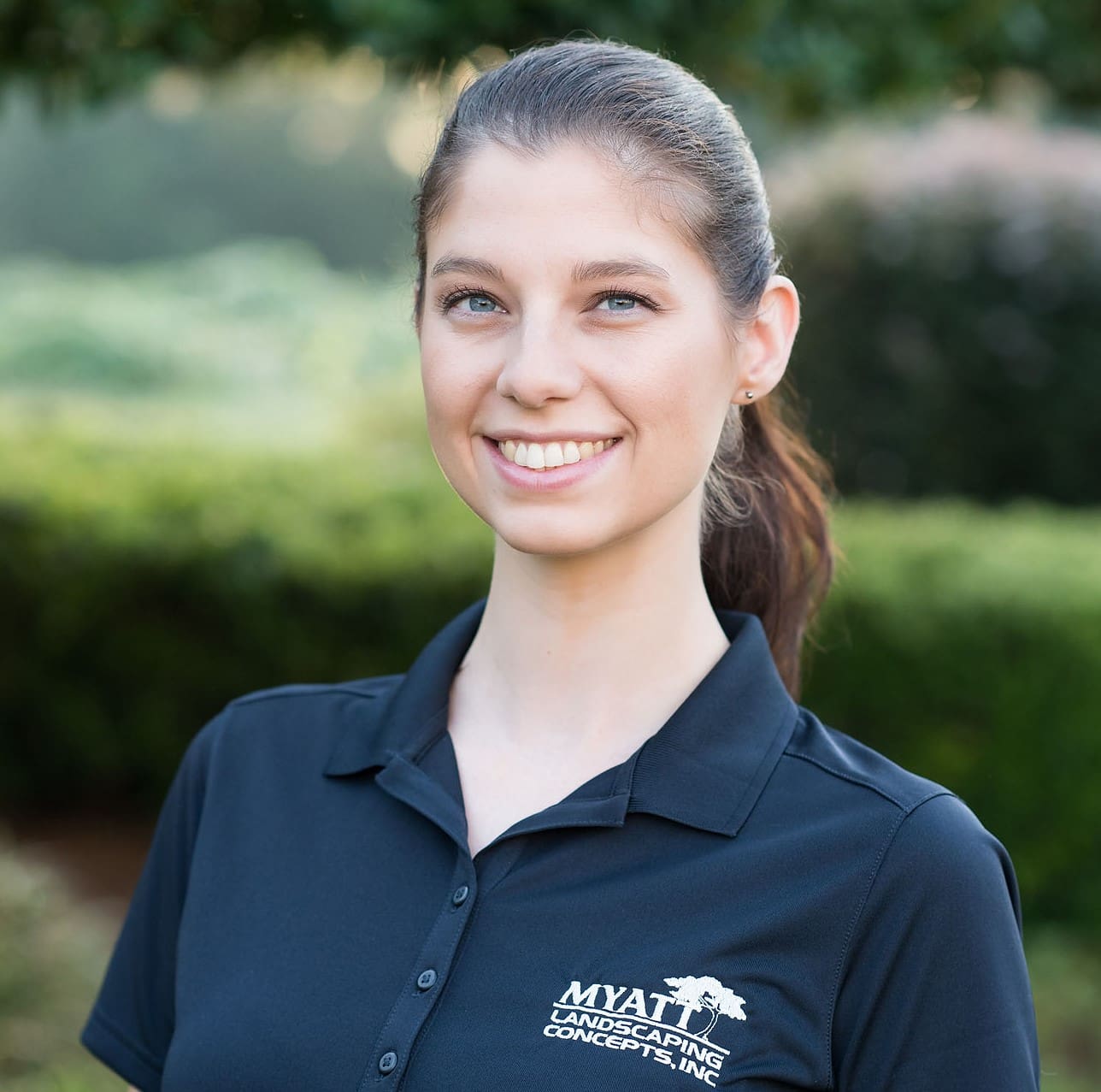
Caitlin Clineff, recruiting specialist and company ambassador for Myatt Landscaping in Raleigh, North Carolina, says these days, everyone is facing a labor shortage in the landscape industry. That’s why we can all benefit from how the industry is approaching employee recruiting strategies.
“We have to do something about this ourselves,” Clineff says.
The key time to start targeting students is in high school or earlier. “By the time a student is in college, they have already made up their mind, at least to some degree, about what they want to study. A student won’t decide to attend a land-grant university and enroll in horticulture if they haven’t been exposed to it at some point earlier in their life.”
At Myatt, positively changing the industry’s perception and recruiting new hires has meant a multi-faceted approach. Clineff has been developing strategies that work to not only draw young people to a future in the landscape industry, but that will also recruit new hires for the company’s more immediate needs.
She describes three ways in which she is approaching recruiting with success.
Employee Recruiting Strategy #1: Relate to Prospects Through Real Stories

Caitlin Clineff, recruiting specialist and company ambassador for Myatt Landscaping in Raleigh, North Carolina
In order to successfully recruit new hires, Clineff says prospects need to be able to “see themselves in a role.” This can be achieved by sharing stories so people can understand that horticulture is not just landscaping—but a true career path. Last fall, Clineff began sharing stories on a company blog and through social media channels like Instagram, Facebook and LinkedIn.
“You can talk in hypotheticals all day, but sharing an actual true story about yourself or one of your employees or coworkers is how you can really connect with people and help them visualize themselves within your company,” Clineff explains.
This also means showing people how many career paths are available within the industry—and that jobs and landscaping are not limited to certain demographics.
“If we want to attract more young people to the industry, we need to have more people on the front lines who folks can relate to,” Clineff adds. “Have people of all ages and backgrounds out there.”
Employee Recruiting Strategy #2: Show, Don’t Tell
In addition to telling real stories about real people, Clineff suggests applying this same strategy to face-to-face conversations with prospects. In order to do this, you need to switch up your typical narrative during interviews.
For instance, some say: “We have a strong culture of promoting from within. As a result, this is a great place to start a life-long career.” Instead, Clineff says you can “show” that same point you want to make by using real-life examples.
She suggests switching the narrative to something like: “You seem like a very motivated person. You remind me of Herbie, one of my coworkers. He started out in an entry-level position on the installation crew and became extremely skilled at detailed, high-quality installation and construction. Then he worked his way up to a crew foreman position and became one of two managers over the entire construction division. He just celebrated his 15th work anniversary with us last October. Additionally, he enjoys going fishing and target practicing with his coworkers.”
By telling a story—and showing what you want to say—the prospect has learned a lot. It’s important to show the type of work you do, a strong focus on training and development, a promote-from-within culture, employee longevity, and that it’s a friendly place to work where people like to hang out–even outside of work.
“It also gives them a way to start visualizing what their own company career path might look like,” Clineff adds.
Employee Recruiting Strategy #3: Connect with Organizations and Schools
Whether students want to pursue college or not, they need to see the landscape industry is a great option.
“We need to reach those students who may not have a plan to go to college. We must let them know our industry can provide training, apprenticeships and great paying jobs that support families,” she says.
Working directly with high schools or middle schools to host career day events and field trips is one way to do this. You can also attend job fairs and assist with career development activities like mock interviews.
“You can also work with youth organizations such as 4-H, FFA, Boys and Girls Clubs, Scouts, Girl Scouts, and others,” Clineff says. “A lot of these organizations have landscape or plant-related activities that youth can participate in such as horticulture projects, plant ID competitions, landscape badges, and community service that could involve planting trees or installing mulch within the community. Even if you don’t have time right now to be very hands-on, you could start by sponsoring your local FFA banquet or donating flowers to plant at a school.”
In her region, Clineff identified 13 high schools that were within driving distance of the office and then researched which ones offered horticulture or agriculture classes or had an FFA program. There were eight that she initially contacted and connected with. That has now grown to 10 high schools and five community colleges in which Myatt is involved.
Clineff suggests a variety of ways to collaborate and “introduce career possibilities” to students. Some of these include hosting a facility tour with hands-on activities, assisting with class curriculum, sponsoring a local university or community college participating in the NALP NCLC event, and offering internships for both high school and college students. There are opportunities for everyone—from those who only want a minimal investment to those who want to get incredibly involved.

